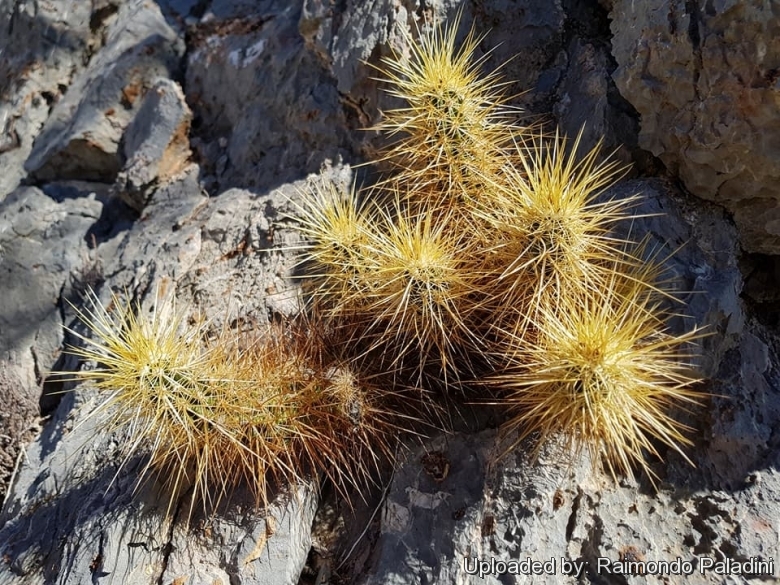
Echinocereus nicholii Photo by: Raimondo Paladini
Origin and Habitat: Echinocereus nicholiiSN|21818]] is a wide-ranging species found in south-central Arizona, USA, mostly from the Silver Bell Mountains near Tucson to Organ Pipe Cactus National Monument, and also in adjacent Sonora southward at least to the Sierra Seri (opposite Isla Tiburon) (Mexico). The species occurs within several protected areas.
Altitude: It grows at elevations from 300 to 900 m asl.
Habitat: The species grows in Sonoran desert scrub on exposed slopes of limestone and granitic and basaltic hills and mountains, often most numerous on north-facing slopes and growing with the superficially similar Echinocereus nicholiiSN|21818]] as well as Carnegiea giganteaSN|6374]]SN|6374]], FeroSN'> 10102' alt='13859'>Cactus cylindraceus#SN#13859'>Fero[[Cactus cylindraceusSN' style='border:none;'>, Ferocactus emoryiSN|21495]]SN|21495]], Mammillaria grahamiiSN|9189]]SN|9189]], Opuntia acanthocarpaSN|7631]]SN|7631]], Stenocereus thurberiSN|8265]]SN|8265]], and sometimes Echinomastus erectocentrusSN|31307]]SN|31307]].
10102' alt='13859'>Cactus cylindraceus#SN#13859'>Fero[[Cactus cylindraceusSN' style='border:none;'>, Ferocactus emoryiSN|21495]]SN|21495]], Mammillaria grahamiiSN|9189]]SN|9189]], Opuntia acanthocarpaSN|7631]]SN|7631]], Stenocereus thurberiSN|8265]]SN|8265]], and sometimes Echinomastus erectocentrusSN|31307]]SN|31307]].
Synonyms:
See all synonyms of Echinocereus nicholii
Common Names include:
ENGLISH: Nichol's Hedgehog, Golden Hedgehog
Description: Echinocereus nicholiiSN|21818]], commonly known as the golden hedgehog, is a big, robust plant with extremely long stems that typically curve upright and form large clusters of as many as 30 stems that can reach 60 tall. The stems are thickly clothed with dense golden spines and creates an almost chartreuse appearance, the hedge-hog colour equivalent of the golden barrel cactus (Echinocactus grusoniiSN|3345]]SN|3345]]). The flowers, while small, are pink or pale lavender, and contrast splendidly with the yellow spines.
Similar species: Echinocereus nicholiiSN|21818]]SN|21818]] was formerly classified as a variety of Echinocereus engelmannii but differs in chromosome number and a suite of morphologic characteristics. Plants are usually more robust and are easily recognized by their exclusively yellow spines and can be readily separated from E. engelmannii by a greater distance between the areoles on each rib, flowers are somewhat smaller, the inner tepals are pale pink instead of magenta, the basal portion of the floral cup is green instead of coloured, and it has smaller seeds. Echinocereus nicholii more closely resembles Echinocereus ledingii than E. engelmannii.
Habit: Branching near ground level, forming clumps often reaching 30-60(-80) cm high and 60-120 cm wide or more with 16-24 or more stems.
Stems: 6-9 cm in diameter, erect to ascending.
Areoles: 10-25 mm apart.
Spines: Conspicuously yellow, often golden, relatively monochromatic, the older spines darker, often blackish.
Central spines: 4-8, the longer ones 40-72 mm, often twisted and somewhat flattened.
Radial spines: 8 to 12
Flowers: Inner tepals pink (much paler than those of Echinocereus engelmannii).
Flowering season: Mid- to late spring (in habitat it blooms in March-April and fruits ripen in June)
Fruits: Remaining spiny after ripening, dehiscent, ovoid, 23-34 mm long, 17-23 mm, the skin green, becoming some-what bronze when fully ripe where exposed to sun, the pulp remaining whitish.
Seeds: 1,1-1,3 x 0,8-1,2 mm wide.
Chromosome number: Echinocereus nicholiiSN|21818]]SN|21818]] is diploid (2n - 22) whereas Echinocereus nicholiiSN|21818]] is tetraploid (2n = 441. This difference in ploidy level represents a reproductive barrier. Hybridization would result in a sterile triploid (2n = 3x = 33), effectively blocking the flow of genes between the parent taxa
Subspecies, varieties, forms and cultivars of plants belonging to the Echinocereus nicholii group
 Echinocereus nicholii (L.D.Benson) B.D.Parfitt: forms clusters up to 60 cm tall and 120 cm across. It has pink or pale lavender flowers, 4 to 8 central spines and 8 to 12 radial spines per areole and dehiscent fruit. Distribution: Central Arizona and NW Sonora, Mexico.
Echinocereus nicholii (L.D.Benson) B.D.Parfitt: forms clusters up to 60 cm tall and 120 cm across. It has pink or pale lavender flowers, 4 to 8 central spines and 8 to 12 radial spines per areole and dehiscent fruit. Distribution: Central Arizona and NW Sonora, Mexico.- Echinocereus nicholii subs. llanuraensis Rutow: has crimson flowers, 6 to 11 central spines and 15 to 18 radial spines per areole and the fruit is indehiscent. Distribution: found only near Guaymas, Sonora, Mexico.
Bibliography: Major references and further lectures
1) Edward Anderson “The Cactus family” Timber Press, Incorporated, 2001
2) Nathaniel Lord Britton, Joseph Nelson Rose “Cactaceae: Descriptions and Illustrations of Plants of the Cactus Family” vol. 4 The Carnegie Institution of Washington, Washington 1923
3) James Cullen, Sabina G. Knees, H. Suzanne Cubey "The European Garden Flora Flowering Plants: A Manual for the Identification of Plants Cultivated in Europe, Both Out-of-Doors and Under Glass" Cambridge University Press, 11/Aug/2011
4) David R Hunt; Nigel P Taylor; Graham Charles; International Cactaceae Systematics Group. "The New Cactus Lexicon" dh books, 2006
5) Del Weniger “Cacti of Texas and Neighboring States: A Field Guide” University of Texas Press, 1984
6) Scott Calhoun “The Gardener's Guide to Cactus: The 100 Best Paddles, Barrels, Columns, and Globes” Timber Press, 31/gen/2012
7) Richard Stephen Felger “Flora of the Gran Desierto and Río Colorado of Northwestern Mexico” University of Arizona Press, 2000
8) Steven J. Phillips, Patricia Wentworth Comus, Arizona-Sonora Desert Museum (Tucson, Ariz.) “A Natural History of the Sonoran Desert” University of California Press, 2000
9) Pierre C. Fischer “70 Common Cacti of the Southwest” Western National Parks Association, 1989
10) Burquez Montijo, A., Felger, R.S., Porter, J.M. & Van Devender, T. 2013. Echinocereus nicholii. In: IUCN 2013. "IUCN Red List of Threatened Species." Version 2013.1. <www.iucnredlist.org>. Downloaded on 26 October 2013.
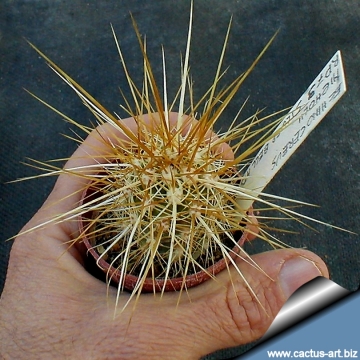 Echinocereus nicholii RP79 Silver Bell Mts AZ Photo by: Cactus Art
Echinocereus nicholii RP79 Silver Bell Mts AZ Photo by: Cactus Art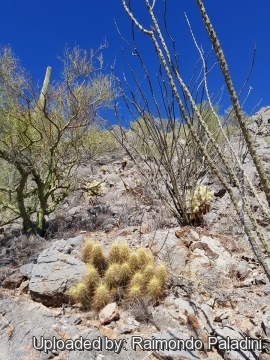 Echinocereus nicholii in habitat. Photo by: Raimondo Paladini
Echinocereus nicholii in habitat. Photo by: Raimondo Paladini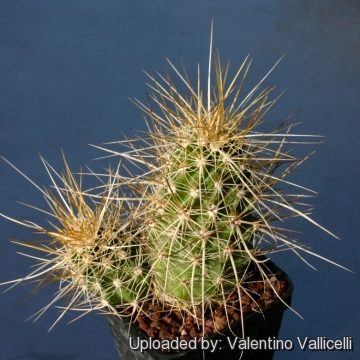 Echinocereus nicholii Photo by: Valentino Vallicelli
Echinocereus nicholii Photo by: Valentino Vallicelli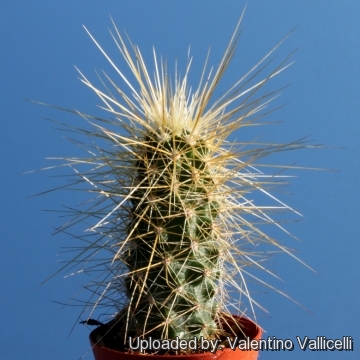 Echinocereus nicholii Photo by: Valentino Vallicelli
Echinocereus nicholii Photo by: Valentino Vallicelli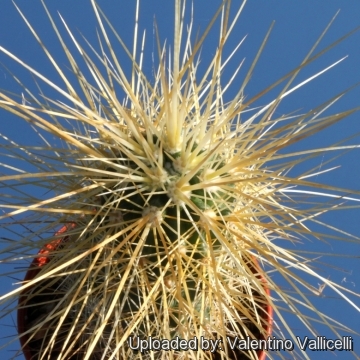 Echinocereus nicholii Photo by: Valentino Vallicelli
Echinocereus nicholii Photo by: Valentino Vallicelli Echinocereus nicholii Photo by: Valentino Vallicelli
Echinocereus nicholii Photo by: Valentino Vallicelli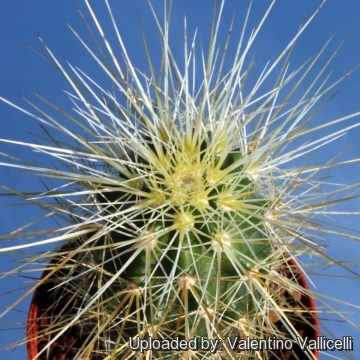 Echinocereus nicholii Photo by: Valentino Vallicelli
Echinocereus nicholii Photo by: Valentino Vallicelli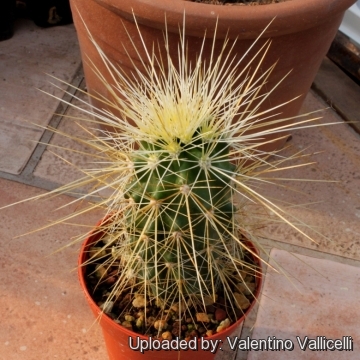 Echinocereus nicholii Photo by: Valentino Vallicelli
Echinocereus nicholii Photo by: Valentino VallicelliCultivation and Propagation: Echinocereus nicholiiSN|21818]] is fairly easy to grow. It makes great potted specimens. When grown in temperate regions, the golden hedgehog is reported to be more free-flowering than Echinocereus nicholiiSN|21818]].
Soil: Use a mineral well permeable soil with little organic matter (peat, humus). It grows in limestone areas of Texas (Big Bend area) and adjacent areas of Mexico, so will probably benefit from extra calcium in its soil.
Growth rate: It grows well, though slowly, but it possible to increase the speed of growth to some extent by providing adequate amount of water, warmth, and a liquid fertilizer diluted half strength during the active growing season, but it’s susceptible to rotting if too wet. Most plants will offset readily, and clumps can be produced in a few years.
Soil: It needs a very porous, slightly acidic potting medium (add pumice, vulcanite, and perlite). Outdoors it does well on poor, rocky soils.
Exposure: For best flowering and spine colouration, grow in full strong sunlight. The golden hedgehog will also thrive in reflected heat. If grown indoor provide 4 to 6 hours, or more, direct morning or afternoon sun.
Watering: It is sensitive to overwatering (rot prone) needs a very good drainage to avoid rotting, but requires more moisture than true desert cacti to grow and produce flowers.
Hardiness: It its natural environment it is very cold resistant from -8° to -12° C or less for short periods of time (USDA zone 8). It can be grown outdoors in Mediterranean warm-temperate climates, but for safe cultivations needs anyway to kept above 5 °C and dry in winter. During winter month, put them in a cool luminous place and encourage them to enter winter dormancy by withholding water and fertiliser over the winter as they will etiolate, or become thin, due to lower levels of light.
Maintenance: Repot every two years. Needs lots and lots of space to grow, use large shallow container or bowl filled with very porous compost. It like pots with generous drain holes.
Pest & diseases: They are susceptible to fungal diseases if overwatered, but are not nearly as sensitive as many other cacti, especially in warm weather. If kept damp through cold periods, they will invariably suffer.
Culinary value: Like many of the hedgehogs, the ripe fruit makes excellent eating.
Design suggestions: It is a fine plant for a rock garden or container, contrasts well with agaves, yuccas, and low-growing flowering plants. If possible, place the golden hedgehog where early morning or late evening light will illuminate the spines from behind. When backlit by the sun, the spines of this cactus create a dazzling golden yellow halo.
Propagation: Seeds, also can be grown from cutting as it slowly branches from the base. The seeds may be germinated and grown in containers. Their main requirements consist of high humidity levels, free-draining soil mix, and enough water, light, and nutrition.


















